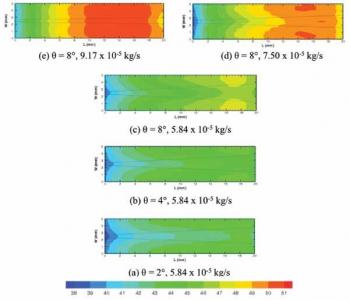
In several biological applications, it is required to maintain the cells above / below the room temperature implying the need for heating / cooling the microdevice. For instance, in polymerase chain reaction (PCR) a particular DNA sequence is amplified and used in applications such as pathogen detection and hereditary disorder diagnosis. The entire process takes place in 3 steps: denaturation, annealing and extension for which the different stations are required to be maintained at constant temperatures of 95°C, 55°C and 72°C, respectively. When the temperature of the sample is to be raised, one can either supply a uniform heat flux at the boundaries, or maintain the boundaries at a higher temperature. As is well known, for hydrodynamically and thermally fully-developed flow in simple geometries, a uniform heat flux leads to a linear increase in surface temperature, and a constant difference between the bulk fluid and wall temperatures.
Prof. Amit Agrawal
